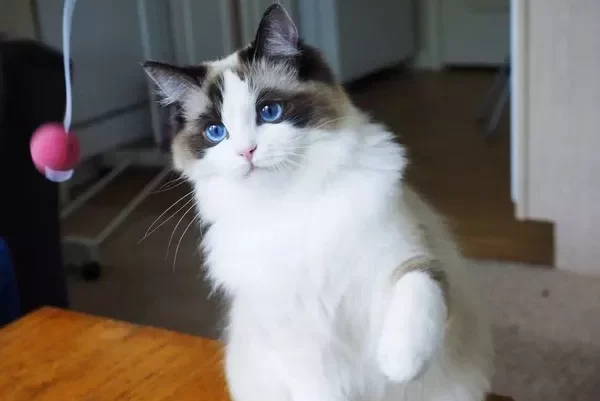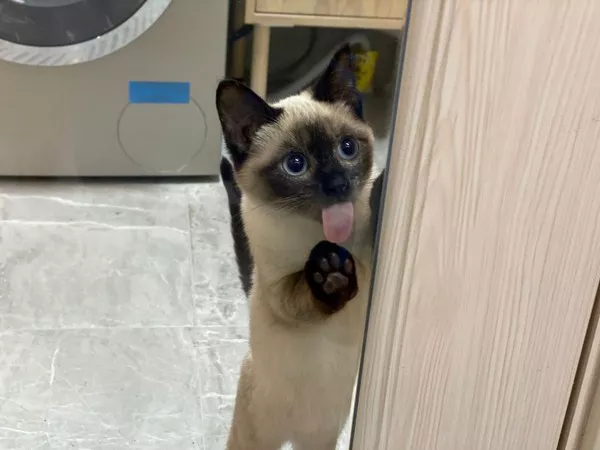Cats are known for their agility, grace, and independence, but like any living beings, they can also experience health issues, including neurological disorders. These disorders can affect a cat‘s nervous system, leading to a range of symptoms that may be concerning for cat owners. In this comprehensive guide, we explore various neurological disorders in cats, their causes, symptoms, diagnosis, and potential treatment options.
Understanding Neurological Disorders in Cats
Neurological disorders in cats involve abnormalities in the nervous system, which includes the brain, spinal cord, and nerves throughout the body. These disorders can result from various factors, including genetic predisposition, infections, toxins, injuries, or underlying medical conditions. Understanding these disorders is crucial for early detection and effective management.
Common Neurological Disorders in Cats
Epilepsy: Epileptic seizures in cats can be caused by abnormal electrical activity in the brain. Seizures may vary in intensity and duration, and some cats may experience auras before a seizure occurs.
Feline Ischemic Encephalopathy (FIE): FIE is a neurological disorder characterized by poor blood flow to the brain, resulting in behavioral changes, disorientation, and head pressing.
Feline Vestibular Syndrome: This disorder affects the inner ear and can lead to balance and coordination problems. Cats with vestibular syndrome may display head tilting, unsteady gait, and rapid eye movements.
Neuropathy: Peripheral neuropathy is a disorder that affects the nerves in a cat’s limbs, leading to weakness, difficulty walking, and muscle wasting. It can be caused by diabetes or other underlying conditions.
Feline Hyperesthesia Syndrome: Cats with this disorder may exhibit extreme sensitivity along their backs, leading to frantic self-grooming and aggressive behavior.
Idiopathic Facial Nerve Paralysis: This condition, often seen in older cats, affects the facial nerve, causing facial drooping, difficulty closing the eyes, and drooling.
Recognizing Symptoms of Neurological Disorders
Identifying neurological disorders in cats can be challenging, as symptoms may vary widely. Common signs to watch for include:
Seizures: These may manifest as sudden, uncontrollable movements, loss of consciousness, drooling, or vocalization.
Altered Behavior: Cats may display changes in personality, such as increased aggression, confusion, or disorientation.
Muscle Weakness: Cats with neurological issues may have difficulty walking, jumping, or maintaining balance.
Coordination Problems: Unsteady gait, falling, or circling may indicate a neurological problem.
Head Tilt: A persistent tilt of the head may signal vestibular issues.
Excessive Grooming: Cats may groom excessively due to discomfort or hypersensitivity.
Diagnosis and Evaluation
If you suspect your cat has a neurological disorder, it’s crucial to seek veterinary evaluation. Diagnosis often involves a combination of the following:
Physical Examination: Your veterinarian will perform a thorough physical examination to assess your cat’s overall health and neurological function.
Blood Tests: Bloodwork can help rule out underlying medical conditions that may be causing neurological symptoms.
Imaging: X-rays, MRI, or CT scans may be necessary to visualize the brain and spine, identifying structural abnormalities or tumors.
Cerebrospinal Fluid Analysis: A sample of cerebrospinal fluid may be collected and analyzed to check for infections or inflammation in the central nervous system.
Electroencephalogram (EEG): An EEG may be conducted to record brainwave activity, aiding in the diagnosis of epilepsy.
Nerve Conduction Studies: These tests evaluate nerve function in the limbs, helping diagnose peripheral neuropathies.
Treatment and Management
The treatment of neurological disorders in cats depends on the specific condition and its underlying cause. Here are some general approaches to managing these disorders:
Medication: Many neurological conditions can be managed with medications to control symptoms. Anti-seizure medications, pain relief, and anti-inflammatory drugs are commonly prescribed.
Physical Therapy: Physical therapy and rehabilitation exercises can help cats regain strength and coordination after neurological issues.
Dietary Management: Cats with conditions like diabetes or metabolic disorders may benefit from special diets and nutritional supplements.
Environmental Adaptations: Adjusting your cat’s living environment, such as providing padded surfaces for weaker cats or minimizing hazards, can enhance their quality of life.
Supportive Care: Cats with neurological disorders may require ongoing supportive care and monitoring. Regular check-ups with a veterinarian are essential to track progress and make necessary adjustments to treatment plans.
Surgery: In some cases, surgical intervention may be required to address structural issues or remove tumors.
Caring for Your Cat
Providing a safe and comfortable environment for your cat is crucial when dealing with neurological disorders. Regular veterinary check-ups and open communication with your veterinarian will help ensure your cat receives the best care possible.
In conclusion, neurological disorders in cats can be challenging to diagnose and manage, but with proper veterinary care and a supportive home environment, many affected cats can lead fulfilling lives. As responsible cat owners, it’s our duty to recognize the signs of neurological issues, seek timely medical attention, and provide the necessary care and support to improve our feline companions’ well-being.



























